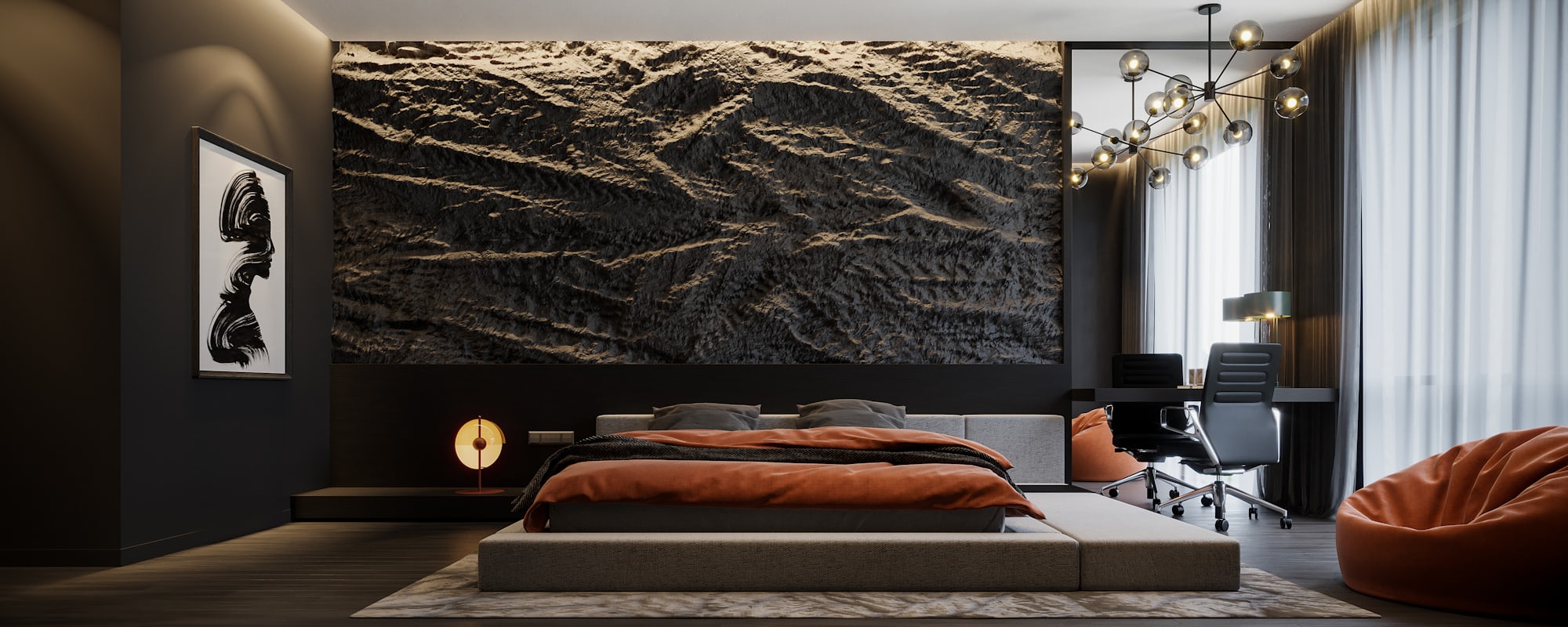Creating Your Dream Home: A Guide to Interior Design Essentials
This article explores the essential elements of interior design, offering practical tips and inspiration for transforming your home into a personalized sanctuary.
Understanding Color Psychology
Color plays a crucial role in setting the mood of any room. Understanding color psychology can help you make informed choices that resonate with your personality and lifestyle. Warm colors, like reds, oranges, and yellows, can evoke feelings of warmth and energy, making them ideal for spaces like kitchens and living rooms where social interactions thrive. On the other hand, cool colors such as blues, greens, and purples promote tranquility and relaxation, making them perfect for bedrooms and bathrooms.
When choosing a color palette, consider using a primary color as a base and complementing it with secondary colors through furniture, accessories, and artwork. A harmonious color scheme can transform a space, making it feel cohesive and well thought out.
Selecting the Right Furniture
Furniture selection is one of the most significant aspects of interior design. It’s essential to choose pieces that not only fit your style but also your space and needs. Start by measuring your rooms to understand what will fit comfortably without overcrowding. Functional furniture should enhance the usability of the space while contributing to its aesthetic appeal.
For a balanced look, mix different styles and materials. Pairing a modern sofa with vintage chairs can create an interesting contrast that adds character to the room. Additionally, consider multifunctional furniture, such as ottomans with storage or sofa beds, especially if you have a smaller space. These choices maximize functionality while maintaining style.
Lighting: Setting the Atmosphere
Lighting is often an overlooked element in interior design, yet it plays a pivotal role in creating the right atmosphere. A well-lit room feels inviting and warm, while poor lighting can make it feel cramped and unwelcoming. Aim for a mix of ambient, task, and accent lighting to achieve a layered effect that caters to various activities and moods.
Start with ambient lighting, such as ceiling fixtures or wall sconces, to provide general illumination. Then, incorporate task lighting, like desk lamps or reading lights, to support specific activities. Finally, use accent lighting, such as decorative lamps or LED strips, to highlight artwork or architectural features. This combination allows for versatility and can dramatically change the look and feel of a room.
Incorporating Textures and Patterns
Textures and patterns add depth and interest to your home, making it visually engaging. Layering different textures can create a warm and inviting atmosphere. Consider incorporating textiles like plush rugs, soft throw pillows, and textured curtains to add warmth to the space. Wood, metal, and glass elements can also contribute to a balanced texture palette.
When it comes to patterns, aim for variety while maintaining harmony. Mixing patterns can be tricky; start by selecting a dominant pattern for large areas, like a sofa or rug, and use smaller patterns for accents. Stripes, florals, and geometric designs can all coexist beautifully if they share a color palette.
Personalizing Your Space with Decor
Decorative elements are where you can truly express your personality and make a house feel like a home. Artwork, photographs, and decorative objects can all contribute to the overall aesthetic of your space. When choosing decor, think about what resonates with you—whether it’s travel souvenirs, family photos, or pieces from local artists.
Gallery walls are a popular way to showcase personal art collections or photographs. Arrange frames of varying sizes and shapes for an eclectic feel, or use a grid pattern for a more structured look. Additionally, plants can breathe life into your space. They not only enhance aesthetics but also improve air quality, creating a more inviting environment.
Designing Functional Spaces
Functionality is key in interior design. Each space in your home should serve a specific purpose and accommodate your lifestyle. Consider how you use each room and what activities will take place there. For example, if you enjoy cooking and entertaining, your kitchen design should facilitate both functions seamlessly.
Open-concept layouts are increasingly popular, as they promote flow and connectivity between spaces. However, if your home has more defined rooms, think about how to optimize each area. Use furniture arrangement to define spaces within a room, creating cozy conversation areas or functional workspaces. The goal is to ensure that every space is not only beautiful but also practical for everyday living.
Embracing Sustainability
In today’s world, sustainability has become an essential aspect of interior design. Choosing eco-friendly materials and furnishings can reduce your environmental impact while promoting a healthier home. Look for sustainable materials, such as bamboo, reclaimed wood, and recycled textiles.
Additionally, consider energy-efficient appliances and lighting options that can save on utility bills and reduce your carbon footprint. Incorporating plants into your decor not only enhances aesthetics but also contributes to better indoor air quality. Embracing sustainability in your design choices not only benefits the environment but can also create a more tranquil and health-conscious living space.
Conclusion
Creating your dream home is a rewarding endeavor that requires careful thought and creativity. By understanding the essential elements of interior design, including color psychology, furniture selection, lighting, textures, and personalization, you can transform your living space into a sanctuary that reflects your unique style. Embrace the journey of designing your home, allowing your personality to shine through while ensuring functionality and sustainability. With these principles in mind, you can create an inviting, beautiful, and harmonious environment that you’ll love for years to come.